Green architecture – SUNY Sheila Johnson Design Center
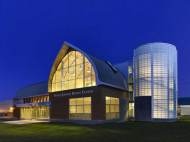 State University of New York (SUNY) Sheila Johnson Design Center building at the Morrisville State College is an interesting example of how a building can be transformed to serve another purpose. An old dairy barn on the college’s ground was converted into a keynote building of the campus. The new modern looking facility for new programs in architecture and interior design features various sustainability solutions, and it is expected it will obtain LEED Gold certification.
State University of New York (SUNY) Sheila Johnson Design Center building at the Morrisville State College is an interesting example of how a building can be transformed to serve another purpose. An old dairy barn on the college’s ground was converted into a keynote building of the campus. The new modern looking facility for new programs in architecture and interior design features various sustainability solutions, and it is expected it will obtain LEED Gold certification.
Designed by Perkins Eastman and built by Hueber-Breuer, the 2,322-square-meter (25,000-square-foot) Sheila Johnson Design Center is a thoroughly modern facility housed with interesting history behind it. The original tie stall barn was built in 1920s in the center of the campus, but it burned to the ground in 1938 and was rebuilt in 1941.The college moved the barn to its current Eaton Street location piece by piece in 1961, and it remained in use until 2004.
Although it was envisioned that most of the original structure should be reused, the end results are rebuilt silhouette of the building which is framed in steel and glass to capture the ideal northern light. In order to lower the impact and increase reuse of the old building, the original barn siding and other materials recycled from the site were used on interior finishes. The rest of the building materials were locally sourced, and the wood used in interior is FSC certified.
The main building welcomes visitors with a dramatic vaulted and double-height entrance atrium and a gallery that exhibits students’ work. Alluring elements include dramatic arches, interlocking spaces and a double-height studio, a mezzanine-level studio suspended above the second floor, and four studios that envelop students in vast space and light.
Creative work spaces and the unique programs elements include a visualization studio, central atrium, and student gallery. Communal support spaces such as wood shops, spray booths, and rapid prototyping labs are concentrated in one area and shared by different departments.
The building is well insulated and it has insulated low E glass with argon filling at its north side to increase insulation. The building features geothermal heat pump wells for heating and cooling, as well as low energy consumption and energy-efficient HVAC (Heating, Ventilation, Air-Conditioning) controls. Energy needs are lowered with abundance of natural day-lighting and energy efficient user-controlled lighting.
Green features have been incorporated throughout, including materials such as poured-in-place concrete walls with fly ash content and recycled steel, water-based finish on the wood and Energy Star 50-year certified architectural shingles on the roof.
Indoor air quality was ensured with usage of low VOC (Volatile Organic Compound) emitting interior paints and finishes. 10-meter (32-foot) high ceilings ensure airy working d study environment and the indoor air quality is being monitored.
I strongly support usage of sustainable and green solutions in educational facilities since they promote more efficient and healthier way of living to their students and visitors who’ll embrace it and apply it in their lives. SUNY Sheila Johnson Design Center is a great example of that practice, and I hope that its sustainability will inspire future architects and interior designers who study there.

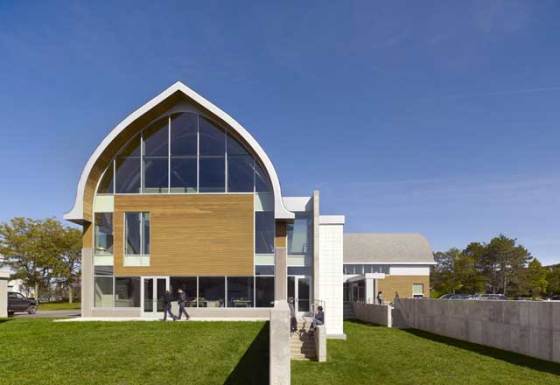
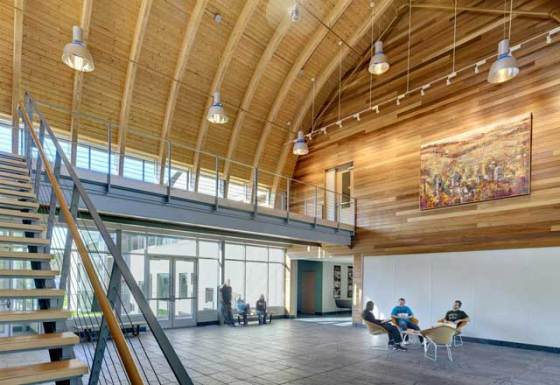
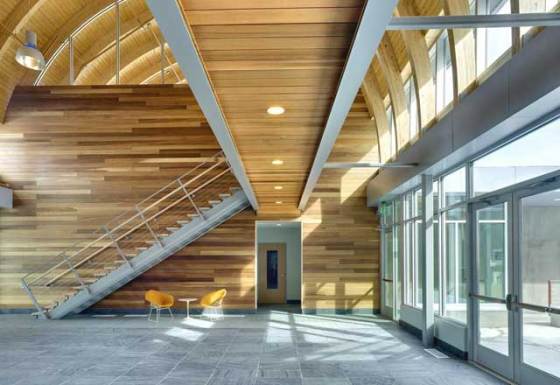
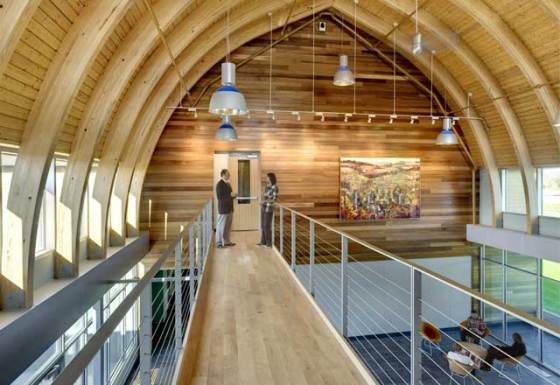
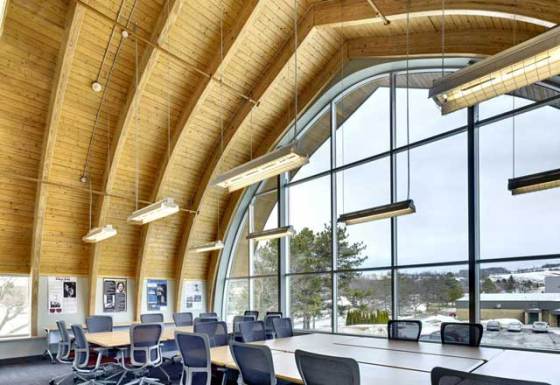








Leave your response!